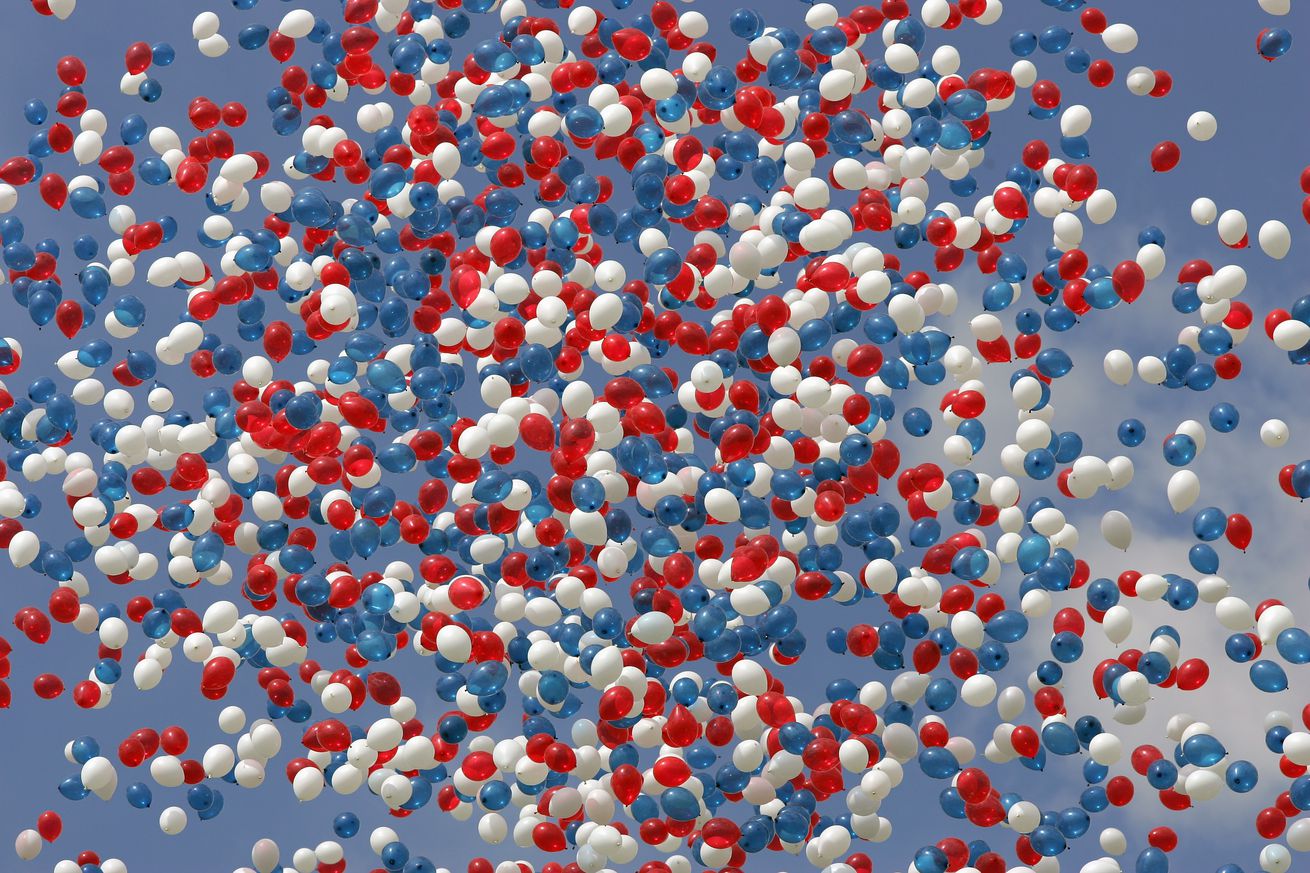
A look at players who have improved their stock before the resumption of play on Friday. Plus, a scouting report on a largely unknown pitcher, and another unknown makes his organizational debut.
The Week That Was
It was a short week for the full-season affiliates, and the last full week for the Pygmy Rattlers of Salt River, who will see their season come to an end on Thursday. The DSL season will last a bit longer, but baseball season is starting to wind down.
In their short series, the Aces and Sod Poodles each won two out of three, while the Hops and Rawhide each won a single game of their three. The Pygmy Rattlers went 2-3, the Black squad in the DSL went 2-2, and the Red squad went 3-1. On the whole, that’s a 13-12 week.
Organizational batters slashed .247/.362/.389. Organizational pitchers struck out 182 against 117 walks in 205 innings, posting an ERA of 4.39 and a WHIP+HBP of 1.551.
Batters of the Week
Raily Liriano, DSL Arizona Red (16 PA, .538/.600/1.154, .526 RC/PA)
With the shortened weeks, only three players of the 88 who went to the plate got to 20 plate appearances on the week, which is generally the cut-off point. But Liriano was really good in his playing time. He went 7-for-13, and five of his hits were for extra bases, with three doubles and a triple and a home run.
Gian Zapata, Pygmy Rattlers of Salt River (15 PA, .538/.571/1.007, .510 RC/PA)
Zapata almost reached Liriano’s total despite just three of his seven hits going for extra bases, as he hit two home runs. The outfielder has appeared towards the bottom of prospect lists, but hadn’t shown much offensively until recent days, as he’s torn things up over a five game hitting streak and eight game on-base streak. He’s got a decent chance at moving up to Visalia after the complex season ends.
Starting Pitchers of the Week
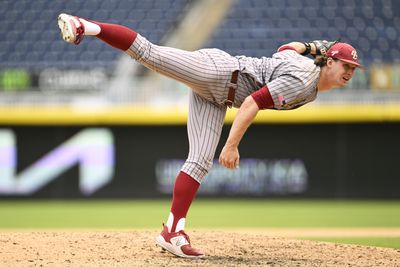
Photo by Eakin Howard/Getty Images
John West, Hillsboro (7 IP, 0 H, 0 R, 1 BB, 6 K, Game Score 82)
Jose Cabrera, Amarillo (7 IP, 1 H, 0 R, 1 BB, 5 K, Game Score 79)
One would think a week with a hitless start and fewer games should make it easy to just choose one. But between the better defense at Hillsboro and the tougher competition in AA, and that West’s start was only slightly better than Cabrera’s, it’s best that they split honors. West—a twelfth-round pick last year out of Boston College—has shown flashes most of the year, but this was easily his best performance. He’s been on prospect lists, and if he continues like this he will climb them. He’s the second-tallest pitcher in the system (behind the injured Billy Corcoran) and has a larger frame and higher velocity. There is work to be done, but he’s got a chance to be a solid fourth or fifth starter in the future. Cabrera started looking good in 2023, but a PED suspension raised questions about how much of that was natural. He simply came back even better last year in Hillsboro, and has carried it over to Amarillo, albeit not without a couple of hiccoughs, but the Texas League is a tough place to pitch, and Hodgetown is the toughest. He’s got big home/road splits (not quite as big as Roman Angelo’s) and has also seen a BABIP of .358 against him.
Relief Pitcher of the Week
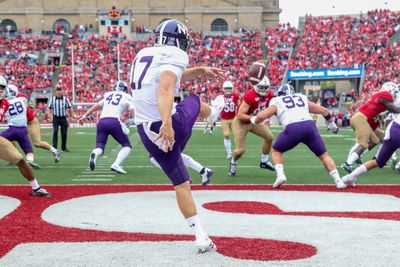
Photo by Lawrence Iles/Icon Sportswire via Getty Images
Dan Kubiuk, Amarillo (0.2 IP, 0 H, 0 R, 1 K)
With the shortened week, not many pitchers had multiple appearances, and those who did weren’t particularly good. The more traditional options were Eli Saul (who worked two scoreless innings for Amarillo on Saturday), Taylor Rashi (who got the save in a 5-4 game in Albuquerque last night), and a few other pitchers who worked perfect innings here or there. So why not take a non-traditional route and highlight the most unusual debutant of the season?
Kubiuk was a two-sport star in high school (the same high school as current Mariners’ manager Dan Wilson, in fact) and went to Northwestern, where he spent two years as a backup quarterback who got into all of two games and never attempted a pass. He walked on to the baseball team, and in 2016 he started ten games. He focused more on his future career, interning at Merrill Lynch. He got a master’s degree. And he returned to the football field as the main punter for the Wildcats in 2019.
Needless to say, baseball teams weren’t particularly interested in a punter who hadn’t played baseball since 2016, and of course there was the lost season for many players in 2020. So he returned to competitive baseball in 2021, with the Washington (PA) Wild Things. That began an itinerant journey throughout the lesser-known parts of the baseball world. The largest city he played in was Winnipeg. He generally got good results, and found himself playing for the Piratas de Campeche in the Mexican League this year, closing out games on a roster that included plenty of former big leaguers. (Among the pitchers, the most notable are Zac Rosscup and James Hoyt, but position players include Chris Carter, Delino DeShields, and Hanser Alberto.) He posted an ERA of 1.19 in 28 appearances there.
So, just over two months shy of his 30th birthday, affiliated ball finally came calling, and he was signed and assigned to Amarillo. Despite a comfortable lead he didn’t get into the game on Saturday, but he was called upon in a difficult situation on Sunday. Trailing 2-0, Jhosmer Alvarez had allowed a single and a walk around a foul-out, and so the Missions were looking to put the game away. In came Kubiuk, who mostly peppered the zone to strike out the first batter he ever faced in affiliated ball (Jacob Campbell) and retire Ripken Reyes on a pop-out to left field to keep the Soddies in the game.
In a couple of years, we will likely hear complaints about “spoiled” athletes who should just take whatever the billionaire owners deign to give them and play the game. Remember players like Kubiuk, who is anything but spoiled, and rather than going into a comfortable white-collar job has toiled away in obscurity for years, and will probably remain obscure. He’s likely never going to see a major league roster. But he’s emblematic of a group of players who love the game, and stick at it despite everything.
All Helium Team, Thus Far
It’s been a little bit more than half a season, and it’s time to look at the players who haven’t been considered top prospects who have boosted their stock so far this year. All stats are from before the resumption of play on Friday.
Catcher: Carlos Virahonda, Pygmy Rattlers of Salt River
Virahonda looked good with the bat in 2023 before having a dismal 2024, both in the Dominican Summer League. But it seems that 2024 may have been spent working primarily on his defense behind the dish. In 277 innings at catcher in 2024, he did not commit an error and threw out a ridiculous 47% of would-be base stealers. He came to the Arizona Complex League this year, and has absolutely torn it up. He’s slashed .347/.464/.455 for a wRC+ of 150, which is good, but not the most impressive part of his offensive performance. Virahonda has struck out in just 11.8% of his 148 plate appearances. That’s in line with Demetrio Crisantes, who struck out in 12.6% of his 151 plate appearances prior to his injury. The only player in the system within 30 plate appearances of Virahonda and a better rate is Ildemaro Vargas. As for the arm? He’s thrown out 39% of would-be base stealers this year, against a league average of 31%. There have been other good catchers this year, but it’s Virahonda who has seen his stock rise the most.
First Base: Ivan Melendez, Amarillo
After multiple seasons of seeing his stock drop, Melendez has finally turned in a good season. Part of it may be the lower pressure on him; he no longer has the burden of being viewed as a top prospect, and he’s been moved towards the bottom of the batting order. He’s still demonstrated the power he’s had throughout his career, hitting 15 home runs, second in the Texas League despite missing the first couple of weeks due to injury. His wRC+ and slash lines haven’t rebounded all the way to what they were in 2023, but some of the underlying numbers look better. Yes, he slashed .272/.345/.578 for a wRC+ of 134 in 2023, but that was with a BABIP of .354 and a strikeout rate of 34.3%. This year, he’s slashed .267/.350/.515 for a wRC+ of 124 with a BABIP of .296 and a strikeout rate of 24.9%. I’d like to see that go down to around 20% and his walk rate come up over 10%, but there’s no denying that he’s made some progress.
Second Base: Kyle Sinzza, Pygmy Rattlers
After spending last year and the first part of this year in the DSL and slashing .304/.404/.383 Sinzza “The Sizzla” came stateside shortly after his 18th birthday. Since then, he’s slashed .385/.478/.590, albeit in a small sample size of 46 plate appearances and with a BABIP of .484. In 2024, he posted the same number of walks and strikeouts, and while the strikeouts have gone up and the walks have gone down, he’s swinging at around the same rate and his rate of contact has gone up from 65.2% to 75.5%. His numbers will drop with BABIP correction, but with his wRC+ of 151 (178 in the complex), they’d have to drop a lot to see him posting average numbers. Defensively, he played mostly shortstop in the DSL, but has just one game there since coming stateside, and his future home is almost certainly second base.
Third Base: LuJames Groover, Amarillo
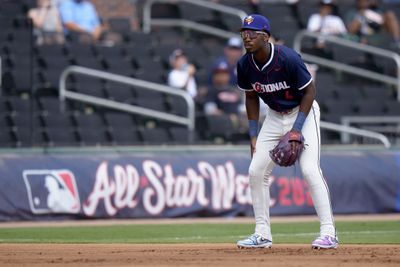
Photo by Matt Dirksen/Getty Images
Groover was already on prospect lists, but with third base a weak position in the system, no one has really stood out enough to merit this spot. Plus, the knock on Groover throughout his time in the system has been his defense, and to a lesser extent his lack of speed. He’s not going to be a gold glove third baseman, but with the help of playing consistently in one spot and being healthy, he’s shown enough to increase optimism that he can man the position at a reasonable level. His speed likewise will never be good, but he did manage two infield singles in the Futures Game. He’s slashing .312/.386/.469 for a wRC+ of 127, but the bat was never in doubt.
Shortstop: Eybert Sanchez, Dominican Summer League
There is necessarily a major caveat to this pick, in that I have no idea whether or not Sanchez has a chance to stick at shortstop. The limited information available out of the DSL does not extend to defense. But of the international signing crop of the last year, Sanchez may be the most pleasant surprise. He signed for $300,000 out of Venezuela, turned 17 in January, and has posted a wRC+ of 114 in his 130 plate appearances in the DSL. He’s walked 26 times against just 18 strikeouts. Yes, pitchers are wild in the DSL, but a lot of batters swing at them anyway. If his defense is good enough to stick at shortstop, the Sanchez signing could wind up the best of the most recent signing period.
Outfield: Erick De La Cruz, Dominican Summer League
If, at opening day, someone had told me that a De La Cruz in the Diamondbacks system led all affiliated batters (minimum 50 plate appearances) with a wRC+ of 173, I would have thought that top signing Elian De La Cruz got off to a dream start. Elian has not been bad; he’s slashed .236/.373/.309 for a wRC+ of 98. But Erick has been on another level, slashing .359/.446/.625. His 173 wRC+ ranks 28th in all of minor league baseball, and he has struck out less than all 27 ahead of him. He actually slumped this week; his wRC+ was in the 190s. Twelve of the 27 ahead of him have BABIP’s of .400 or higher. Erick’s is .356. League-wide BABIP in the DSL is .310, so he’s above-average, but not astoundingly so. He signed for $455,000 last year and posted decent numbers, but nothing like this. The reports that I have seen did not project power anything like he’s shown. Hopefully he will come stateside soon and we can see how he does against slightly better competition.
Outfield: Jakey Josepha, Visalia
Another former prospect who fell off rankings after a dismal year, Josepha is working on reclaiming his spot with a much better stint in Visalia. In fact, he’s literally 100 percent better, as his wRC+ at the level last year was 3 and this year it is 103. He’s still an athletic defender and baserunner, but he’s also shown the ability to drive the ball, although he’s probably better suited finding a gap and letting his speed do the work. He’s cut the strikeouts, he’s walking more, and he’s getting the results to match.
Outfield: Gavin Conticello, Amarillo
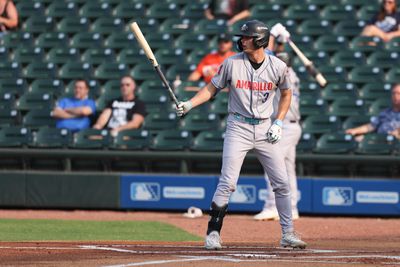
Photo by Kyra Blundell/Minor League Baseball
Conticello has been on prospect rankings, generally towards the bottom. But while Tommy Troy has gotten more attention, it’s been Conticello who has been the key of the Sod Poodles’ offense. He’s got some power, but his increase in the slugging department over last year has more to do with doubles than home runs. His on-base percentage has gone up 50 points, thanks to a 13.1% walk rate. He’s not a particularly fast guy, but he is an athletic guy, and his arm plays well in right field; he had 14 outfield assists last year and has eight so far this year. Hopefully the eighth round pick in 2021 can make it up soon, so we can finally stop hearing about how the Diamondbacks are obsessed with short players; Conticello is 6’3”, 195.
Utility: Trent Youngblood, Visalia
The importance of good utility players in the system has been underscored this year with Tim Tawa’s ability to fill in at multiple spots. The Count certainly fits the bill. He’s made at least five starts at all three outfield spots and second base. He doesn’t have the arm strength to play on the left side of the infield in anything other than an emergency capacity, but he does have the athletic ability to do so in a pinch. He got off to a slow start at the plate as he transitioned from Division III to professional baseball, but over the last month has slashed .404/.478/.544. He’s shown some speed; after being caught in his first attempt, he’s stolen 13 bases in a row. He’s the first player drafted out of Transylvania, and he’ll look to be the first who played at the school to reach the major leagues (Cy Barger attended Transylvania but did not play baseball there; he played in the major leagues from 1906-1915.)
Starting Pitcher: Junior Sanchez, Visalia
Sanchez’s surface level numbers look good; he’s 4-1 with a 2.32 ERA, with 64 strikeouts and 23 walks in 73.2 innings. Sure, you’d like the strikeout rate to be higher, but he’s getting good results. But those surface numbers obscure the fact that he gave up seven runs (one-third of his total) in the two relief appearances he had to start the year. Since moving to the rotation, his ERA is 1.60, and he’s gotten 60 of those strikeouts. He’s been consistent; he’s posted a game score of 50 or higher in 11 of his 13 starts, and one of those was his first start and had more to do with his not being stretched out. He’s only had one poor start, when he allowed 12 hits and six runs against Modesto on May 16. Apart from that, he’s never allowed more than two runs in a start, and has six quality starts to his name. Oh, and he’s 19. He’s gotten overshadowed by Daniel Eagen who has also been incredible, but Eagen was a recognized mid-tier prospect and came out of college. Sanchez has been Sir-Not-Appearing-On-These-Lists because of his small stature and the fact that he relies more on control and generating soft contact than blazing stuff, but if he keeps getting these results people will have to take notice. He throws a fastball that has some carry above the zone and a curveball that has good late movement, and they can play well off of one another. He also has either a hard changeup or two-seamer that has some tailing action. He was promoted to Hillsboro this past week and made a start there after this was written.
Relief Pitcher: Hayden Durke, Reno
While some recognized Durke as a prospect, he’s moved from being the closer at Hillsboro all the way to AAA, and it would not be a surprise if he makes his major league debut at some point this year. It’s been quite the rise, but it’s also been pretty well documented, so there’s no need to expound upon it here.
A Look at Jaitoine Kelly
January 2024 saw the Diamondbacks officially sign many international free agents. Twenty-three of them were announced on January 15, including the signings of Adriel Radney, Belfi Rivera, and some other relatively-heralded prospects. Jaitoine Kelly signed on January 28th and mostly escaped notice; his signing bonus amount wasn’t even reported. Then at 16, he was already a big guy. He turned 17 midway through the DSL season, and he struggled for the most part. He gave up 36 hits and 33 walks in 37 innings, numbers which aren’t going to impress anyone. But after posting much improved numbers in three starts in the DSL this year, he was brought stateside.
He made his stateside debut against the Reds’ complex team on June 24th. Still 17 at the time, he collected a save as he pitched the final four innings, allowing a run on three hits without walking anyone. He followed that up with four solid innings against the Angels’ affiliate and a rare quality start against the Cubs’ affiliate as he pitched five scoreless innings before allowing two runs in the sixth.
Looking at the numbers, things did not go well last week against the Giants’ affiliate. But he faced the minimum through three innings and experienced rapid BABIP normalization in the fifth. There were still some highlights. In the first inning, he faced the Giants’ top prospect and AAA All Star Bryce Eldridge, and got him to ground into a double play. In the second inning, he faced his first major leaguer, the rehabbing Sam Huff, and struck him out. Eldridge got his revenge with an RBI single in the fourth, but Kelly struck out Huff for a second time.
While getting data from the complexes is extremely difficult much of the time, and video is typically limited to tiny clips that show next to nothing, I was able to get quite a bit of data from this latest outing, and so I’m taking this opportunity to write more on Kelly.
I’ve mentioned Kelly a lot because of his size. He first stood out to me when I was looking for fun facts in the preseason report; he’s the second heaviest player in the system, and the heaviest (John West) has five (listed) inches on him. Kelly is listed at 6’3”, 257 pounds, which suggests a Sabathia-esque build. That’s not the case. He’s a big guy; I suspect he’s grown to be taller than that 6’3”, and is certainly in better shape than he was when he signed. I expected that he’d gotten in better shape, but I didn’t have any idea what to think about his stuff.
Kelly’s arsenal is fairly typical: fastball, curveball, changeup. The changeup is on what I will call the cuttery end of the spectrum rather than a straight change or circle change.
Fastball: the fastball is a four-seam variety that topped out at 94.4 MPH, but was consistently 92-93. The average velocity was 93 MPH. That’s 1.9 MPH slower than the average right-handed pitcher in the big leagues. The spin rate was right around average. He threw the fastball 31 times out of his 73 pitches and did not noticeably lose any velocity, even with the fourth and fifth innings requiring him to throw a lot of pitches. It averaged 15 inches of carry with just 4.35 inches of horizontal movement, but some pitches showed signs of greater movement. For someone who turned 18 less than a month ago, he commanded the pitch well.
Curveball: Kelly threw 28 curveballs, and there really aren’t many pitchers to compare him to. His curveball is predominantly horizontal movement; he averaged -1 inches of vertical movement but 15.32 inches of glove-side horizontal movement. Those figures would put him in the bottom ten of qualified major league pitchers for vertical movement and in the top fifteen for horizontal movement. While Kelly is not a strikeout pitcher, his curveball is his closest thing to a strikeout pitch, and it was with the curveball that he struck Huff out on both occasions. And he was perfectly comfortable throwing it multiple times in a row. In Huff’s first at bat, Kelly started with a fastball and followed with four curveballs in a row. The second time around, he dispensed with the fastball and struck him out swinging on what was one of the three best curves he threw. When his curveball is at its best, it is right up there with the curveballs in the arsenals of some of the best pitchers in the game. Even when it isn’t, there’s a ton of glove-side movement; the least horizontal movement he got on any of his 28 curveballs was 12 inches, and 12 inches of movement is still enough to place in the top-50 on MLB leaderboards. His second strikeout of Huff came on a curveball with 9 inches of vertical movement and 12 of horizontal, which is nearly identical to Jack Flaherty’s average.
Changeup: at first I thought this was an attempt at a cutter, as when the first left-handed batter came up he moved from throwing all four seam fastballs to throwing all changeups (he introduced more variation later on.) He threw it 14 times, and appeared to be inconsistent with his release. It has an extremely low spin rate (sometimes around 800 RPM) and doesn’t play off of his fastball particularly well. Since he used the fastball primarily as a “show-me” pitch against left-handed batters, he was able to get away with it for a bit, but it got hammered the second time through the order. If he did add a cutter to his repertoire, his changeup would work much better, although probably not against right-handed batters.
Overview and outlook: Kelly has two serviceable pitches and it’s easy to project improvement for them. But they do not play off of each other as well as they could. Since his curveball primarily breaks horizontally, it doesn’t tunnel well with his fastball, which works best up in the zone. But his best curveballs did mesh well with his fastball, and came from a release angle that worked well off the fastball; most of his curveballs came from a different angle that players at higher levels will pick up. Given his age and size, not only could he add several ticks to his fastball velocity, but he could get a lot of extension and make it seem even faster. If he does this, and his curveball develops into being consistently what his best curveballs are now, there’s setup man or closer potential. On the other hand, if he hones his three pitches so that he can throw any of them at any time, he could wind up in long relief and make the occasional spot start.
Aruba has only produced six big leaguers, with only two of them (Xander Bogaerts and Sidney Ponson) having lengthy and productive careers. I’m not going to predict that Kelly will join them. But there’s something to build on, and it will be intriguing to see if the Diamondbacks continue to bring him along quickly as they have so far.
Also, it’s only fair to note that all of my information comes from what has been his worst appearance all year, thus far.
Next Up
Reno and Hillsboro return home to face Oklahoma City and Tri-City, while Amarillo goes to Corpus Christi and Visalia goes to Rancho Cucamonga. As far as playoffs are concerned, it’s really only Amarillo (in first place) and Visalia (one game back) who are in it.
